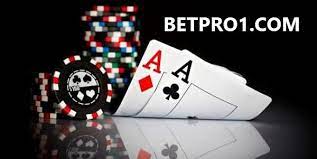Slot machines, the iconic symbols of the gambling industry, hold a mesmerizing allure for millions around the globe. Whether in the buzzing atmosphere of a casino floor or the convenience of online platforms, slots continue to captivate players with their flashing lights, engaging sound effects, and the promise of life-changing jackpots. But what lies beneath the surface of these seemingly simple games of chance?
A Brief History
The roots of the modern slot machine can be traced back to the late 19th century when a mechanic named Charles Fey developed the first mechanical device known as the “Liberty Bell” in San Francisco, California. This early incarnation featured three spinning reels with various symbols, including horseshoes, diamonds, spades, hearts, and a Liberty Bell. The Liberty Bell symbol ultimately gave the machine its name and became the precursor to the iconic cherry symbol seen in many modern slots.
Over the decades, slots evolved from mechanical machines to electromechanical devices and eventually to the digital video slots we see today. With advancements in technology, the possibilities for game features, graphics, and sound effects have expanded exponentially, enhancing the player experience.
How Slots Work
At the heart of every slot machine lies a random number generator (RNG), a sophisticated algorithm designed to ensure that each spin is independent and random. This means that the outcome of each spin is entirely unpredictable and not influenced by previous spins or the amount wagered.
When a player initiates a spin, the RNG generates a random sequence of numbers, which corresponds to the symbols displayed on the reels. These symbols are then arranged on the screen, creating the outcome of the spin. Whether a player wins or loses is determined by the specific combination of symbols that land on the payline(s) or in some cases, scatter symbols that trigger bonus rounds.
The Mathematics of Chance
While the outcome of each spin is random, slot machines are programmed to pay out a certain percentage of the money wagered over time, known as the return to player (RTP) percentage. This is typically set by the game developers and can vary from one slot to another. For example, a slot with an RTP of 95% will theoretically return $95 for every $100 wagered over the long term.
It’s important to note that the RTP percentage is calculated over millions of spins and does not guarantee individual results. Players may experience winning streaks or losses regardless of the RTP, as luck plays a significant role in short-term outcomes.
Variance and Volatility
Slots are often categorized based on their variance or volatility, which refers to the risk associated with playing the game. Low-variance slots tend to offer frequent but smaller wins, while high-variance slots offer larger payouts but less frequently. The choice between low and high variance slots ultimately depends on a player’s risk tolerance and preference for gameplay.
The Future of Slot Machines
As technology continues to evolve, so too will the landscape of slot machines. From virtual reality slots that immerse players in interactive worlds to skill-based slots that require strategy and decision-making, the possibilities are endless. Additionally, advancements in mobile technology have made slots more accessible than ever, allowing players to enjoy their favorite games anytime, anywhere.
In conclusion, slot machines are more than just games of chance—they are complex systems built on mathematical principles and technology. While the outcome of each spin may be unpredictable, the thrill of the chase and the potential for big wins continue to draw players to these timeless icons of the gambling world. As we look to the future, one thing is certain: the allure of slots will endure, captivating generations to come.


